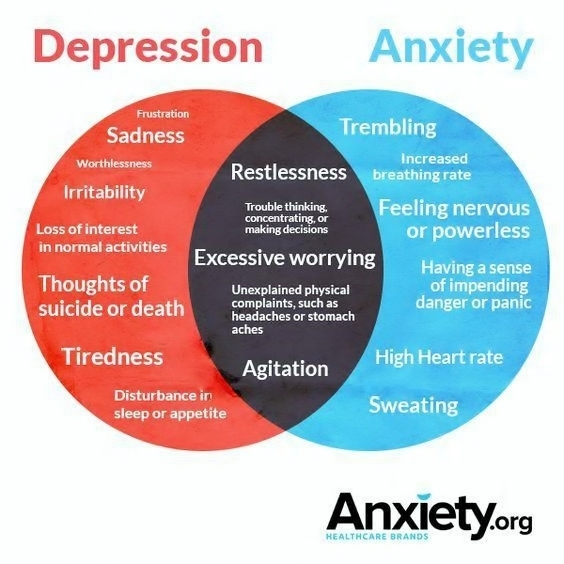Understanding Anxiety

Anxiety is more intense and lasts longer than simple worrying and interferes with an individual’s daily life. It is the most common mental illness in America and affects over 25 percent of youth aged 13 to 18. Nearly one-half of individuals with depression also have been diagnosed with an anxiety disorder. Both conditions are more common in females.
If an adolescent is experiencing a cluster of physical symptoms, including dry mouth, hyperventilation, losing sleep, muscle tension, nausea, palpitations and/or rapid heartbeat, shortness of breath, sweating and unexplained headaches or stomachaches, he or she could be suffering from anxiety. Severe anxiety, which does not go away on its own, can make individuals overly self-conscious and causes fears and worries that are out of proportion, unrealistic and often uncontrollable.
Untreated anxiety typically worsens over time. Fortunately, cognitive behavioral therapy, which can be combined with medications like antidepressants as needed, is extremely successful in treating anxiety. There also are a number of simple techniques for combating symptoms.
- Overthinking problems can cause more harm than good. If you have difficulty letting go of a situation, establish a time limit (10 minutes or less) to vent about it and then stop when that has passed.
- Do not imagine what-ifs. Focus on known facts and try to put your concerns in perspective by looking at both the worst and the best case scenarios.
- Write a particular worry on a piece of paper, along with the reasons why it is bothering you. Then rip the paper up and throw it away as a concrete reminder that it is time to move forward.
- Find a distraction. Go for a run, play your guitar, watch a happy television show or organize your closet. It will allow you to focus on positive things and can make you feel like you are reducing any messes or chaos in your life.
- Mental Health America suggests the grounding technique of noticing 5 things you can touch, 4 things you can see, 3 things you can hear, 2 things you can smell and 1 thing you can taste. By viewing a favorite photo, chewing a piece of gum or hugging a pet, you can relax and focus yourself quickly. In addition, drinking something very hot or cold or holding a frozen orange can increase mindfulness and help you become present in the moment.
- Understand and be aware of what you find overwhelming, which could be people, environments or things that do not bother others. Devise strategies in advance for managing the specific situations that trigger your stress. Use Mood Maps to track your anxiety.
- Schedule personal time off from school, work and other responsibilities to clear your mind. Listening to a podcast or an audio book will help you to focus on something other than your own thoughts. Similarly, puzzles can constructively absorb your attention and provide a sense of accomplishment when they are completed.
With a median age of onset of 6 years, anxiety disorders sometimes occur early in childhood. It is important to remember that the condition is treatable and with help, youth can learn to cope with and manage their anxiety.